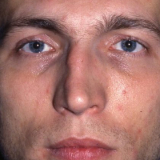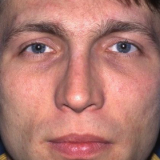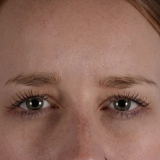When considering a drastic change to your facial appearance, such as rhinoplasty, it’s important to consider all of the factors involved before electing any surgical procedure. At Colorado Facial Plastic Surgery in Englewood, CO, our highly skilled surgeons perform many types of rhinoplasty surgeries, including primary rhinoplasty, rhinoplasty revision, and ethnic rhinoplasty, which can correct the functionality of the nose or improve the overall facial aesthetic. As with any surgery, there will be recovery time involved that may include pain, swelling, and bruising. In this blog, we cover the recovery process after a rhinoplasty procedure and what you can expect as far as swelling is concerned.
Contents
What techniques are involved with rhinoplasty?
At Colorado Facial Plastic Surgery, we perform a majority of our rhinoplasties using the open technique. This involves an incision on the underside of the nose as well as ones inside the nostrils to raise the nasal skin and expose the underlying cartilage, soft tissue, and bone. This allows us to be very precise with the changes we create. The downside is the more exposure we create, the more swelling that tends to occur during the healing process, post-operatively.
What to expect during rhinoplasty recovery?
The nose tends to be a very slow healer. If you’ve ever bumped or broken your nose, you may notice that the swelling can last for weeks or longer. The “drainage pipes” of the nose, also known as the lymphatic system, become disrupted with trauma making the nose hold onto swelling until the pathways are restored. After surgery, the inflammation associated with this normal process of healing can be frustrating for some patients.
After the cast, tape, splints, and sutures are removed at the one-week post-operative visit, patients value the changes in their appearance. The nose itself will appear very swollen. This swelling reduces over the next 8 – 12 months (in some cases, longer) to the nose’s final form. This doesn’t mean that the nose looks “bad” or that a random passerby would notice that surgery has been performed. Rather, the decrease in swelling can be difficult for the patient to notice because he or she sees their nose every day, making it hard to appreciate subtle improvements over time. It is standard practice at Colorado Facial Plastic Surgery to take photographs post-operatively to objectively evaluate the nose. Furthermore, that’s why we often don’t perform revision procedures for a minimum of 8 – 12 months, so that we can appreciate the swelling reduction.
What can I do to help the recovery process?
Aside from being patient and attending regular follow-up appointments in Englewood, CO, there are things that you can do to help reduce the swelling and expedite healing. Taping, steroid injections, following low salt and anti-inflammatory diets, avoiding temperature extremes, and compression of the nasal tissues are all employed with success in the majority of cases. The tradeoff of swelling with the open rhinoplasty technique is the creation of a strong nose that has the potential to remain stable for the patient’s lifetime. We feel that this tradeoff is invaluable, which is why we make ourselves readily available to our patients during their rhinoplasty journey.
If you are considering making an aesthetic change to your appearance, contact us for a rhinoplasty consultation
If you are not pleased with the appearance and/or you have concerns about the functionality of your nose, we encourage you to contact our team for a rhinoplasty consultation. Your comfort level is always our top concern at Colorado Facial Plastic Surgery in Englewood, CO. Our highly-experienced surgeons specialize in facial procedures in the head and neck.







